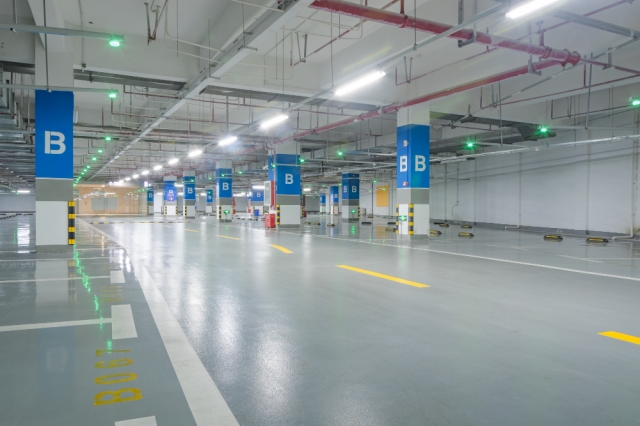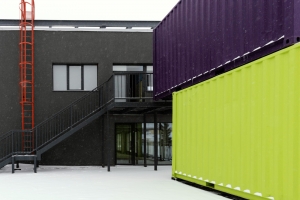Parking areas can often be challenging environments, with limited visibility, tight spaces, and a mix of pedestrian and vehicle traffic. However, with the right safety measures and management strategies, parking areas can be transformed into well-organized, safer spaces for drivers and pedestrians alike. This article explores practical solutions to enhance driver awareness and boost safety in parking areas.
1. Optimizing Layout with Strategic Line Markings
A well-planned layout is essential for maximizing space and ensuring smooth traffic flow in parking areas. Clear, durable car park line marking enables you to define parking spaces, walkways, and traffic lanes, helping drivers navigate safely and avoid confusion. Line markings can designate reserved spaces, loading zones, and pedestrian areas, which help reduce accidents and improve overall efficiency.
2. Implementing Convex Mirrors to Reduce Blind Spots
Blind spots are a common issue in parking lots, particularly around corners and near entry and exit points. Installing convex mirrors in strategic locations can help drivers see around blind spots and anticipate the movements of other vehicles or pedestrians. By expanding drivers' field of view, these mirrors reduce the risk of collisions and create a safer environment for everyone.
Convex mirrors are particularly beneficial for multi-level or enclosed parking garages where sightlines are often obstructed. They are a simple, cost-effective solution for minimizing potential hazards in areas with limited visibility.
3. Enhancing Visibility with Adequate Lighting
Proper lighting is crucial for ensuring driver and pedestrian safety in parking areas, especially during low-light conditions. Well-lit parking lots deter crime, make pedestrians more visible, and help drivers see potential obstacles. LED lighting is an ideal choice due to its energy efficiency, brightness, and longevity. Placing lights at key points, such as entrances, walkways, stairwells, and parking spaces, significantly enhances safety.
Additionally, motion-activated lights in lower-traffic areas can help conserve energy while still providing security. Well-planned lighting design not only improves visibility but also makes the parking area more inviting and accessible.
4. Installing Effective Signage for Clear Communication
Clear, high-contrast signage is essential for guiding drivers through parking lots and maintaining smooth traffic flow. Signs indicating entry and exit points, one-way lanes, speed limits, and pedestrian crossings help to prevent confusion and congestion. In larger parking facilities, wayfinding signs can also direct drivers to specific areas or sections, making navigation more straightforward.
Reflective signage is particularly useful for nighttime visibility. Customized signs tailored to your parking area's unique layout can further improve safety and reduce the likelihood of accidents by clearly communicating essential information to drivers and pedestrians.
5. Digital Solutions for Improved Traffic Management
Incorporating digital tools into parking management can significantly enhance efficiency and safety. Parking guidance systems that show available spots, automated ticketing systems, and occupancy sensors are valuable in improving the parking experience for drivers. These digital solutions reduce the time drivers spend searching for parking, minimizing congestion and improving overall safety.
For larger parking facilities, real-time data provided by occupancy sensors can help parking managers analyze usage patterns, plan for high-demand periods, and optimize the layout based on traffic flow. By embracing smart technology, parking facilities can enhance both safety and convenience, creating a better experience for users.
6. Clear Pedestrian Walkways and Crossing Zones
Designating pedestrian walkways and crossing zones within parking areas is essential for protecting foot traffic and minimizing potential conflicts with vehicles. Painted walkways, barriers, and crossing signals provide clear pathways for pedestrians and alert drivers to high foot traffic areas. Pedestrian zones should be strategically placed near building entrances, stairwells, and elevators to make movement through the parking area as safe and efficient as possible.
Additionally, consider using textured or non-slip paint for pedestrian pathways to enhance traction and prevent slipping, especially in outdoor parking lots exposed to rain or snow.
Staying Safe
Enhancing driver awareness and safety in parking areas requires a combination of strategic layout, effective communication, and the right safety tools. From line markings and mirrors to digital parking solutions and lighting, each element plays a crucial role in transforming parking areas into secure, well-organized spaces. By implementing these practical solutions, parking facility operators can create safer environments that benefit both drivers and pedestrians, ensuring a positive experience for everyone who uses the space.






